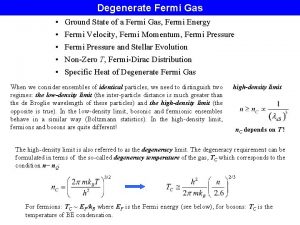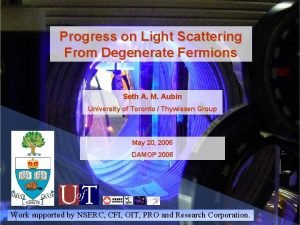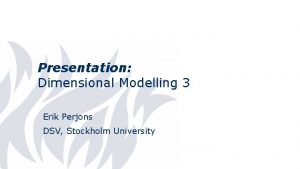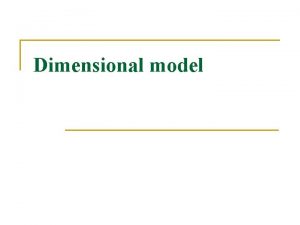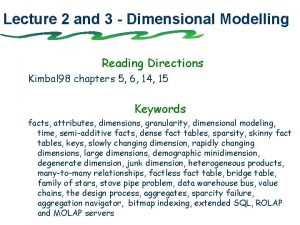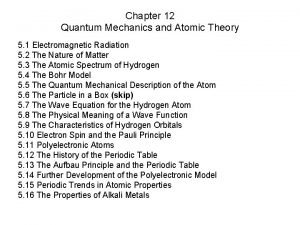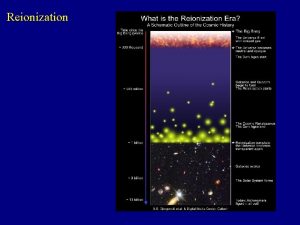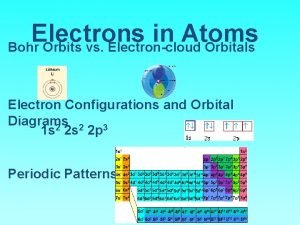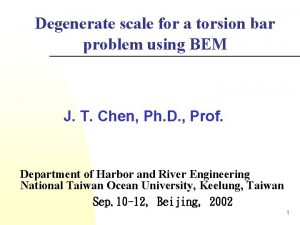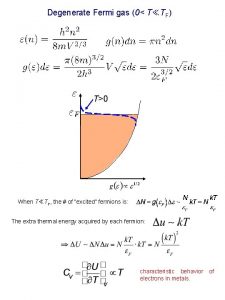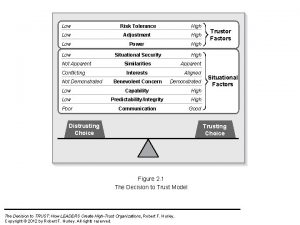Degenerate Fermi Gas Fermi gas at low T










- Slides: 10

Degenerate Fermi Gas

Fermi gas at low T • Most applications are to electons, assume degeneracy g= 2 s +1 = 2 • Increase with decreasing T • Small enough T, wave functions overlap, quantum statistics becomes important

Fermi gas at T=0 • No more than 1 (2 for g=2) electrons in each state • First “e” goes to lowest state, the second must occupy higher energy state • And so on until all the “e”s are put it • There “motion” (non-zero energy) of electrons even at T=0

Fermi gas at T=0, beta = infinity

Distribution in Fermi gas at T=0 Occupation number <n> 1 energy μ

What is μ? Chemical potential of Fermi gas determined by density only

Total energy Eo. S of the type P ~ n^gamma are called polytropic Eo. S gamma =5/3 for Fermi gas

Applicability • T << • Recall, we talked about de Broglie wave length comparable to inter-particle distance. This is exactly the condition. Maxwell. Boltzmann is applicable for opposite inequality.

The Fermi Gas of Nucleons in a Nucleus Let’s apply these results to the system of nucleons in a large nucleus (both protons and neutrons are fermions). In heavy elements, the number of nucleons in the nucleus is large and statistical treatment is a reasonable approximation. We need to estimate the density of protons/neutrons in the nucleus. The radius of the nucleus that contains A nucleons: Thus, the density of nucleons is: For simplicity, we assume that the # of protons = the # of neutrons, hence their density is The Fermi energy EF >>> k. BT – the system is strongly degenerate. The nucleons are very “cold” – they are all in their ground state! The average kinetic energy in a degenerate Fermi gas = 0. 6 of the Fermi energy - the nucleons are non-relativistic

Finite T<< εF What happens as we raise T, but keep k. BT<<EF so that EF? Empty states are available only above (or within ~ k. BT ) of the Fermi energy, thus a very small fraction of electrons can be excited occupancy ~ k BT T =0 (E-EF) The electrons with energies < EF (few) k. BT cannot interact with anything unless this excitation is capable of raising them all the way to the Fermi energy. Only electrons near FERMI SURFACE participate in motion (thermal or, e. g. , due to electric field
